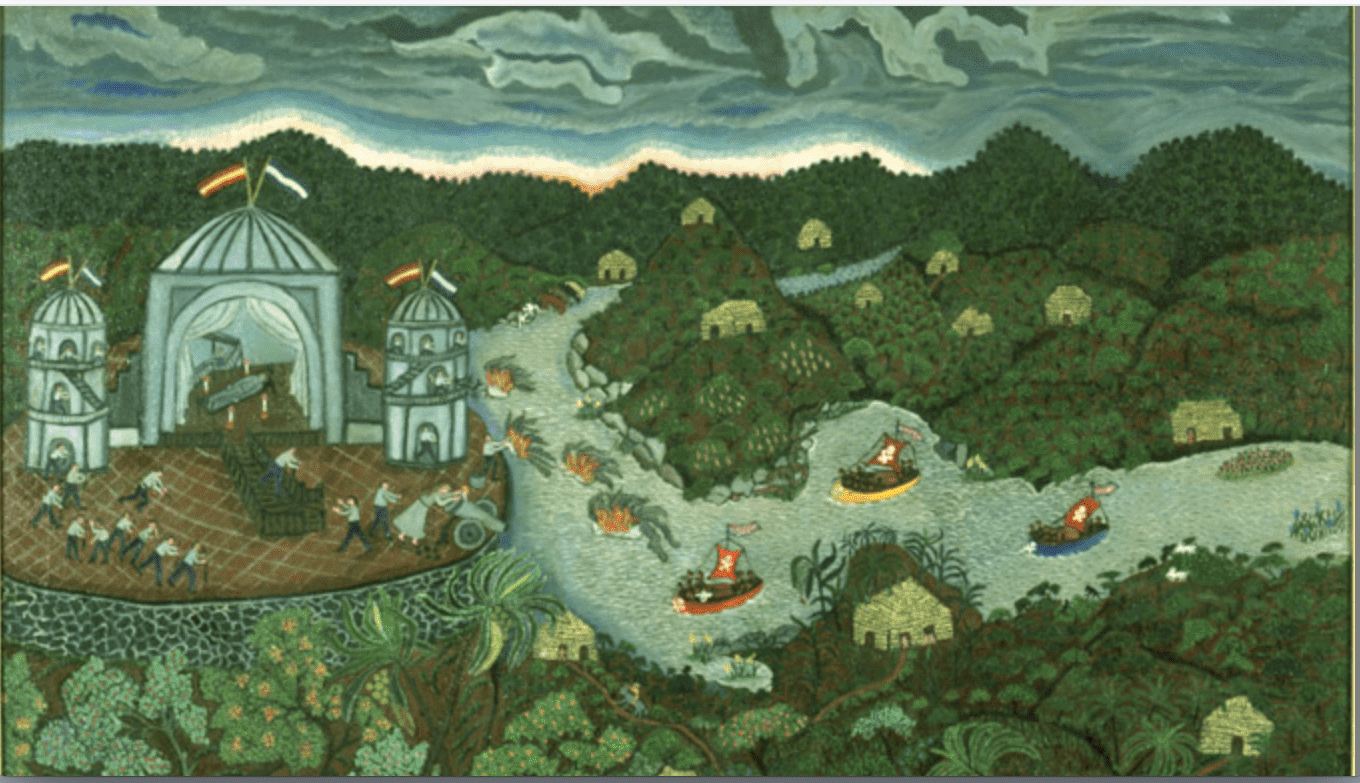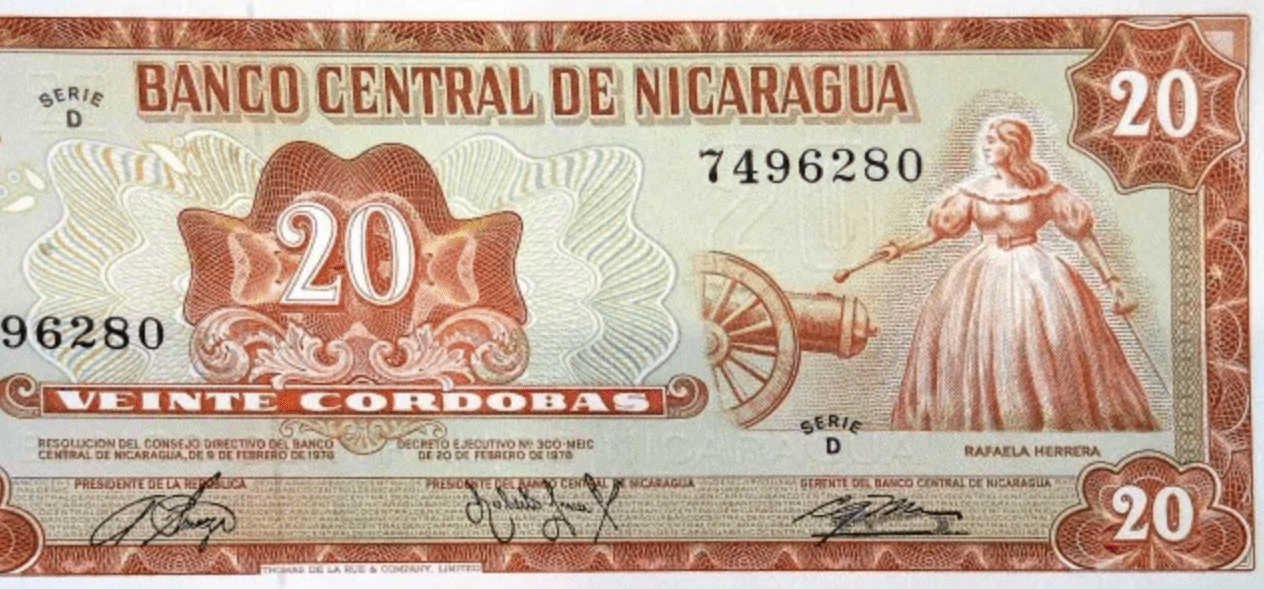Rafaela Herrera is a Nicaraguan heroine. In 1762, She was key in defending the El Castillo Fortress on the San Juan River from the attacks of the British. Rafaela was born in 1742 to Felipa Torreynosa and José de Herrera y Sotomayor. Her father was Spanish and her mother was Afro-Latina. Sadly, her mother Felipa died after childbirth. Rafaela was born in Cartagena de Indias (called Cartagena, Colombia now) where her parents met when José was stationed there. Cartagena was the major port for the slave trade in Latin America, and the African to Spanish population was a ratio of 7 to 1.
Lieutenant Colonel Don José de Herrera y Sotomayor taught his only child, Rafaela, warfare and ammunitions from a young age. She was born into a family of military leaders from her great-grandfather to her father. Her dad taught her about honor, bravery, and service. Around Latin America, he commanded and defended fortresses for the Spanish king. As Lieutenant Colonel he was head of La Fortaleza de la Concepción Imaculada (The Fortress of the Immaculate Conception also known as El Castillo) on the San Juan River of Nicaragua when he became ill and died.
Her father was deceased for eleven days when the siege began on El Castillo. At least 2,000 British and their Nicaraguan coastal allies attacked from five large vessels and many smaller craft. Around 100 men were in the fort. Accounts in Spanish declare the British were pirates. This may be true, although the battle for the fort was part of the Seven Year’s War, a subset of the Anglo-Spanish War. The British declared war against Spain in January of 1762. The British Governor of Jamaica sent an expedition up the San Juan River in July of that year. Lieutenant Colonel Don José’s second in command was about to surrender to the British, but 19-year-old Rafaela would not allow her father’s stronghold to fall.
Rafaela is quoted as saying, “Que los cobardes se rindan y que los valientes se queden a morir conmigo”. That the cowards surrender and the brave stay and die with me.

She inspired the soldiers to protect El Castillo bravely. Rafaela took charge of the cannons and blew up the British Commander on her third volley. For six days the British attacked the fort. But Rafaela continued to dominate with the cannons. She had learned a lot from her father. One story that might be legend, or an example of her military mind, says that Herrera thought of an ingenious strategy to put the British on the defensive. Using paper and cloth immersed in alcohol set on branches, the fort soldiers floated flames down the river at the enemy’s vessels. Although they were a far larger force, after such lively resistance the British retreated. After those days of glory, Rafaela’s military genius lay untapped. Was life thankfully quieter or did she miss the smell of gunpowder?
This renowned heroine saved her country from British domination. But, since she was a woman, and of mixed race heritage, she was not treated as the hero she deserved to be. The Spanish king did not compensate Herrera for her valor for eighteen years, and then only after she wrote a letter supported by a military sponsor in 1780. For a time after her husband Pablo Mora died, she lived in poverty. Finally, in 1781 she received a military pension and a bit of land to live on with her five children. The pension was small for her family and she raised pigs to survive. Rafaela passed away in 1805.
To this day, more than 250 years later, Rafaela Herrera is a household name in Nicaragua and her act of defiance is a symbol of freedom. ¡Olé!
Who’s your favorite hero or heroine?
Gracias for reading Fake Flamenco. –Rebecca
Thank you to Her Odyssey, kayakers paddling in Nicaragua, for inspiring this post with their mention of El Castillo and the incredible Rafaela Herrera! ¡Gracias!


Rebecca, I always learn so much from your posts! This one is cool! 😀
LikeLiked by 1 person
Thanks Carol Anne! Rafaela was a force to reckon with – my sheroe! -Rebecca
LikeLike
wonderful story!
LikeLiked by 1 person
Thank you, Timothy! She was an amazing woman.
LikeLike
You did an excellent article on Ms. Herrera’s bravery on your website! I like how you tell historical and political stories through national currencies. Nice format.
LikeLike
Awesome strong lady … To “honor, bravery, and service.” Sad how the country treated her though despite her valor. Love the post.
Thanks for visiting, checking out my post on The Strong Women of The Americas, and your comments. Appreciate your time and interactions with me.
LikeLiked by 1 person
She was amazing, I thought it was sad too how she wasn’t supported by the country she’d saved! I will check out your post. Thanks!
LikeLiked by 1 person
👍🏽😍
LikeLiked by 1 person
Another great history lesson. Thank you for digging these stories out of histories cobwebs – really interesting. Even then women didn’t get credit for their skill, which shows male dominance of society is a long entrenched idea. Needs to change.
LikeLiked by 1 person
Thanks for your heartfelt comments, Larry. Rafaela Herrera is well known in Nicaragua because she is taught about in history class and featured on currency. The US could do better by its heroines and add heroines to its currency.
LikeLike
Another great female story from history. Thanks Rebecca. I knew a bit of her story from talking to a Sandinista at a party in England in the early 1990s! He was the Mayor of San Fransico Libre and his version was on the lines of, we are so strong our women can beat your Navy.
You say the Spanish called the British pirates. Yes, they often did, and they were often right. Some of our Admirals at the time started out as Privateers, a state-sanctioned type of pirate…..
LikeLiked by 1 person
Thanks for your personal story, Kim! Sounds like a memorable conversation at a party – one of those interesting connections. You spoke with someone who made history about the history of his country. I didn’t realize about the privateer turned admirals. The Spanish may have had a point!
LikeLiked by 1 person
if you don’t mind me asking where did you get your research for this need it for assignment
LikeLike
Thanks, Diego. I don’t mind. I read several articles in English and in Spanish. Here they are:
English: https://en.wikipedia.org/wiki/Rafaela_Herrera
https://www.historyinthemargins.com/2020/05/27/rafaela-herrera-takes-on-the-british-fleet/
Spanish
https://traslaultimafrontera.com/rafaela-herrera/
Click to access timonera13Rafaela%20Herrera.pdf
https://blogs.elespectador.com/actualidad/lineas-de-arena/rafaela-herrera-la-heroina-desconocida
Note: Since Rafaela’s dad was Spanish, she is often called a criolla (all Spanish). I think it is more appropriate to say that she was mixed race (Afro-latina), like her mother. That fact should not be hidden. Good luck with your paper, Rebecca
LikeLike